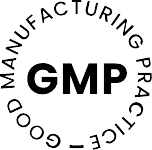Your cells are under attack every day. From UV rays and pollution to poor diet and chronic stress, modern life constantly generates free radicals — unstable molecules that can damage your DNA, proteins, and cell membranes in a process known as oxidative stress.
Many products on the market claim antioxidant power — often without scientific proof — yet there are 6 nutrients officially recognised for their role in protecting cells from oxidative stress. The European Food Safety Authority (EFSA) confirms that Copper, Riboflavin (vitamin B2), Selenium, Vitamin C, Vitamin E and Zinc all contribute to the protection of cells from oxidative stress.
But how exactly do they work? And why do some antioxidant claims fall apart under scrutiny?
How do you know? Symptoms and Early Signs of Oxidative Stress
While oxidative damage is not something you can “feel” directly, it often manifests in vague but persistent symptoms. These include:
-
Fatigue (due to mitochondrial dysfunction)
-
Poor recovery from illness or exercise
-
Brain fog or memory issues
-
Skin ageing (wrinkles, loss of elasticity)
-
Increased sensitivity to infections or stress
-
Slower wound healing
So, what can we do about it? There are 6 proven nutrients.
Zinc for SOD Function
Zinc contributes to antioxidant defence in several indirect but vital ways. First, like copper, zinc is a cofactor for the Cu/Zn superoxide dismutase (Cu/Zn-SOD) enzyme, which breaks down superoxide radicals into hydrogen peroxide. Second, zinc helps to stabilise the structure of proteins and cell membranes, making them less prone to damage by oxidative agents. For example, zinc binds to cell membranes and proteins, helping to maintain their structural integrity under stress.
Third, zinc is essential for the production of metallothioneins, small proteins that can bind harmful transition metals (such as iron and copper in excess), which otherwise catalyse the formation of free radicals. Metallothioneins can also directly scavenge reactive oxygen species. Finally, zinc may inhibit NADPH oxidase, an enzyme that generates superoxide radicals during immune responses. By limiting this enzyme’s activity, zinc helps reduce excessive ROS production and inflammation.
Supplementing with zinc tablets - ideally a tummy-friendly form such as zinc bisglycinate tablets that are balanced with copper - can make a significant difference levels of to oxidative damage in the body.
Copper for SOD Protection
Copper plays a key role in the body’s antioxidant defence system by being an essential cofactor (a helper molecule) for an enzyme called superoxide dismutase (SOD).
This enzyme is one of the body’s front-line defences against superoxide radicals — highly reactive oxygen-containing molecules that are produced as natural by-products of metabolism, especially during energy production in the mitochondria. If these superoxide radicals are not neutralised, they can damage DNA, proteins, and cell membranes, leading to oxidative stress, which is associated with ageing and many chronic diseases. Copper enables SOD to convert these dangerous radicals into hydrogen peroxide, which is less reactive and can then be broken down further into water and oxygen by other enzymes like catalase and glutathione peroxidase. In short, without copper, the body’s ability to detoxify harmful oxygen species would be severely impaired.
Riboflavin (Vitamin B2) for FAD and FMN
Riboflavin is a B-vitamin that the body uses to make two important coenzymes: FAD (flavin adenine dinucleotide) and FMN (flavin mononucleotide).
These coenzymes are crucial for many oxidation-reduction reactions — that is, chemical reactions where electrons are transferred, often generating or neutralising free radicals. One of the most important enzymes that depends on FAD is glutathione reductase. This enzyme is responsible for recycling glutathione, a major antioxidant molecule found inside cells. Specifically, it converts oxidised glutathione (GSSG) back into its active, reduced form (GSH), which can then go on to neutralise free radicals and protect the cell. Without enough riboflavin, this regeneration process slows down, and cells become more vulnerable to oxidative damage.
Selenium for Glutathione Peroxidase
Selenium is a trace mineral that is incorporated into the structure of special antioxidant enzymes known as selenoproteins. The most well-known of these is the glutathione peroxidase (GPx) family of enzymes.
These enzymes protect cells by reducing harmful substances like hydrogen peroxide (H₂O₂) and lipid hydroperoxides (oxidised fats in cell membranes) into harmless water or corresponding alcohols. These reactions are critical because excess hydrogen peroxide and lipid peroxides can trigger damaging chain reactions that injure cellular structures and promote inflammation. Selenium is also required for the function of thioredoxin reductase, an enzyme that helps maintain the redox balance of cells — that is, the balance between oxidation and reduction processes. Together, these selenium-dependent enzymes help keep oxidative stress in check.
Vitamin C (Ascorbic Acid) Neutralises ROS in Watery Parts of the Body
Vitamin C is a water-soluble antioxidant, meaning it works in the watery parts of the body like blood plasma and the inside of cells. It directly neutralises several types of reactive oxygen species (ROS), including superoxide radicals, hydroxyl radicals, and peroxyl radicals, all of which can damage cells if left unchecked.
In addition to its own scavenging activity, vitamin C plays a crucial supporting role in regenerating other antioxidants, especially vitamin E. When vitamin E neutralises a free radical in a cell membrane, it becomes oxidised and temporarily inactive. Vitamin C can donate an electron to restore vitamin E to its active form, effectively recycling it. This antioxidant recycling system helps maintain the overall antioxidant capacity of the body. Vitamin C also contributes to maintaining the health of connective tissue and supports immune function, both of which can be negatively affected by oxidative stress.
Vitamin E (Tocopherol) for the Protection of Fat
Vitamin E is a fat-soluble antioxidant, which means it is especially important in protecting the fatty components of cells, such as phospholipid membranes and lipoproteins.
The most biologically active form of vitamin E is alpha-tocopherol. It protects cells by intercepting lipid radicals, reactive molecules that form when fats in the cell membrane are attacked by free radicals. This process, known as lipid peroxidation, can damage cell membranes and lead to cell death if left unchecked. Vitamin E breaks this chain reaction by donating a hydrogen atom to stabilise the lipid radical, effectively neutralising it. After doing so, vitamin E itself becomes a radical, but a much less reactive one. It can then be regenerated by other antioxidants, particularly vitamin C, to continue its protective work. This makes vitamin E a cornerstone of membrane stability and cellular health.
The “Antioxidants” that Don’t Really Work
Many supplements are marketed as antioxidants, but not all of them live up to the claims. Compounds like resveratrol, acai, goji, and other so-called “superfruits” often show antioxidant potential in lab tests (such as high ORAC scores), but these effects rarely translate in the human body due to poor absorption, rapid metabolism, or low bioavailability. Others, like activated charcoal or colloidal silver, are promoted with no credible evidence of antioxidant activity at all — and in some cases, they may even be harmful. While these products may sound impressive, they lack the rigorous scientific backing that supports nutrients like vitamin C, zinc, or selenium. In short, not all antioxidants are created equal — and hype is no substitute for evidence.
Real Antioxidants, Real Protection
In a market saturated with trendy powders, exotic berries, and bold antioxidant claims, it’s easy to overlook the micronutrients with proven, measurable effects on cellular health. But when it comes to protecting your cells from oxidative stress — a key factor in ageing, inflammation, and chronic disease — the science is clear.
Copper 🧲, Riboflavin 🌾, Selenium 🌰, Vitamin C 🍊, Vitamin E 🌻 and Zinc 🦪 each play a unique and essential role in the body’s antioxidant defence systems. Whether by supporting critical enzymes, neutralising free radicals directly, or maintaining the stability of DNA, proteins, and cell membranes, these nutrients form the core of your biological resilience.
While many supplements rely on hype, these six nutrients are backed by authorised health claims and decades of biochemical research. They’re not just antioxidant buzzwords — they’re vital tools your body uses every day to stay balanced, energised, and protected from the inside out.
If you want to support your body’s natural defence against oxidative damage, start with what’s proven.









